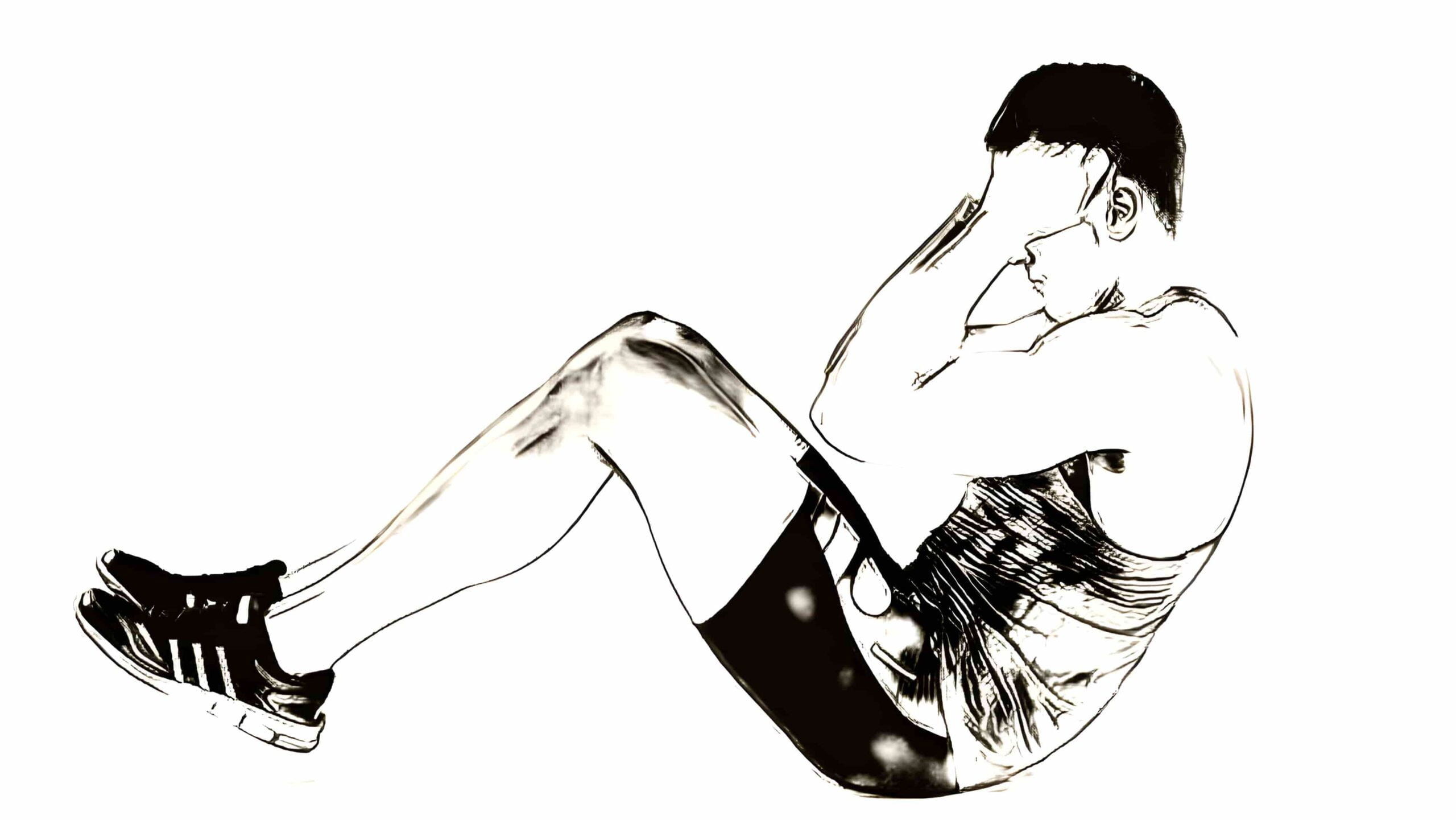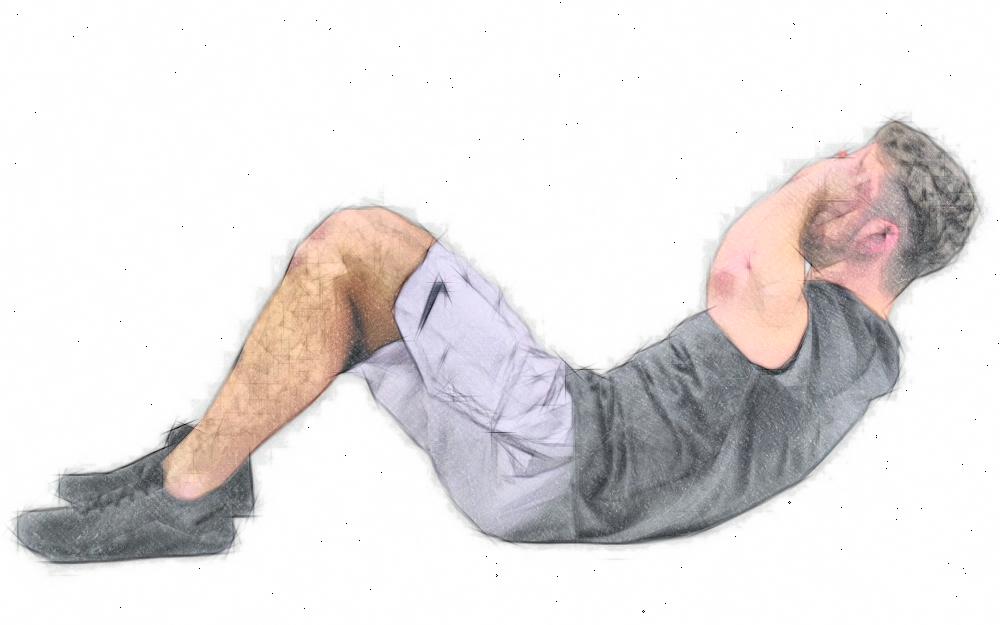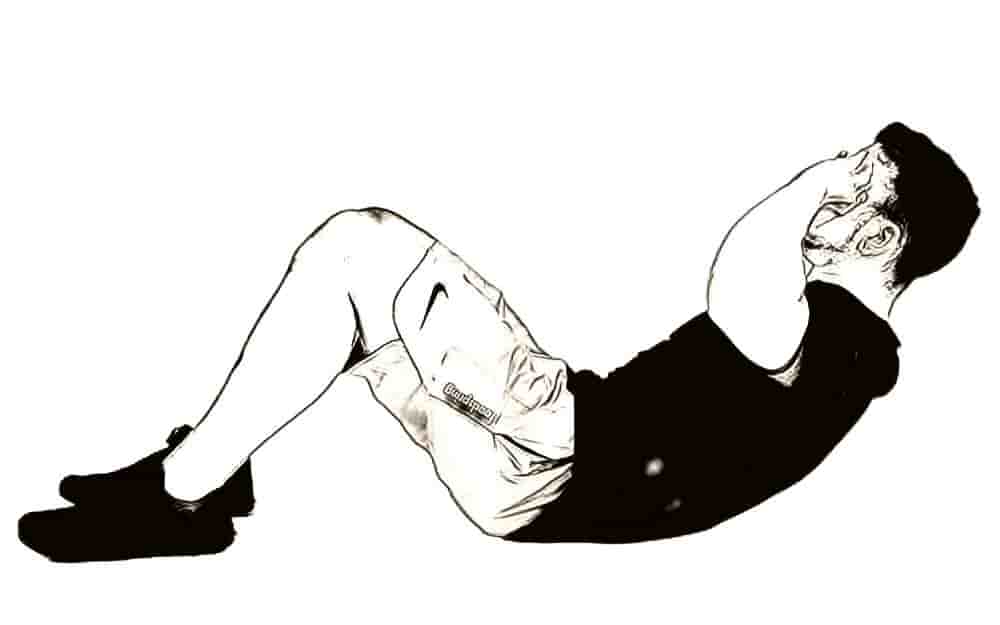Do you want to have a body like a god with 6-pack abs? Have you heard somewhere that sit-ups 100 times a day for 30 consecutive days will be achieved? You will be sorely disappointed, so have many people. Read this article to learn why sit-ups won’t give you a six-pack and how to get six-packs.
One of the most persistent exercise myths is that you need to do thousands of sit-ups in order to get a six-pack. Six-packs are made at the home, not in the gym. Doing countless sit-ups will more likely result in sore lower backs than a six-pack.
For more information on the reasons why sit-ups may not be the best way to get sexy abs, and what they actually are, read this article.
The most effective exercise for abs is the sit-up. You won’t see any changes in your body if you do 100 situps every day for a month.
Table of Contents
Why Sit-Ups Don’t Give You a Six-Pack
The Rectus Abdominis is the muscle group that people are trying to get a six-pack. This group of muscles flexes the spine. Sit-ups are performed by flexing your hips to 90 degrees. Then, move your torso isometrically up and down (meaning your torso doesn’t move). The spine is not able to flex or extend. This means that the six-pack muscles (rectus abdominals) you are trying to train won’t be able to do so.
In reality, a sit-up is a training exercise for the Iliopsoas Complex. This muscle is primarily a hip Flexor. It is being worked as your body lowers to the ground. This is not a bad thing. Strong hip flexors are essential. The sit-up is not the best option if you are looking for a six-pack. ASLO The Psoas attaches at the 12th thoracic vertebrae. This means that you have a high chance of hurting your back by doing hundreds of sit-ups.
So, what is the best six-pack exercise? The hollow hold, or hollow rock. These will target your six-pack better than a sit-up and will improve your gymnastics.
YouTuber Isaiah Photo set out to achieve a six-pack that was “godlike.” He did 100 situps per day for 30 days as part of his fitness goal. However, he soon discovered that muscle building is more than just doing endless crunches.
He had to first break down the 100 reps into smaller numbers. He says, “I couldn’t do 100 situps without having to stop. So what I would do was I would do as many as possible, then I would stop for 20-30 seconds and then continue doing the situps until my 100 mark.”
He says, “It took me only 5 to 6 minutes, so it was really easy for anyone to do this.” “The sit-ups became much easier as you repeated them, just like any other exercise.”
Isaiah remained the same weight throughout the challenge. After 30 days of 100 situps, he was disappointed to not see any real difference in his body, other than a slight decrease in fat.
He says that his jeans were a bit looser, but that he still doesn’t have six-pack abs. He also said that diet is a crucial factor in building visible six-pack abs.
The other issue is that repetition alone will not bring you success. Isaiah knows that progression is necessary. If you do the same exercise over and again, and you don’t add more weight, or make it harder for your body, then you are just maintaining your muscle mass. It’s not a bad thing. You’re still going to get bigger.
He concludes, “If you want your muscle to grow anywhere on your body, then you must keep increasing the weights and making things more difficult.” This is difficult to do in situps, as all you have are your own body weight.
Benefits of Sit-Ups

100 situps per day can help you lose belly fat, shed calories, increase your lean muscle, improve hip flexors, and achieve the results that you desire.
You can lose weight and build muscle with situps. It will improve your posture, improve your mood, improve your energy and help you sleep better.
You can increase your situps from 100 to 500 per day if you are consistent. This will help you burn large quantities of calories and improve your before and afterward results.
It is more likely that you will see results if you can maintain consistency, so aim for 30 days consecutively as your first goal.
To ensure that you hit your muscles in a variety of ways, try changing the type, frequency, intensity, and length of each situp. Mix in planks, crunches, and mountain climbers with pushup jacks.
Let’s now find out how many calories 100 situps can burn and what benefits 100 situps per day will bring. Also, we will discuss the before-and-after results that 100 more situps per day will give you.
Sitting ups have many benefits, including building lean muscle, burning calories, and defining your abs. The first is that the situp will target many muscle groups, including the abs and hip flexors.
You can also give your arms and shoulders a great workout by holding some weights. You will be stronger the more you practice, the more endurance and confidence you’ll have. You will also burn more calories.
Every 100 situps will result in an additional 15 calories being burned.
This can be done as a HIIT exercise, and it will double or triple the amount of work you do each day.
Next, define your abdominal area and strengthen your hip flexors. A strong core will lead to great posture. So work your abs to get taller.
Because of their simplicity and effectiveness, situps are a traditional core exercise that is often included in many exercise programs. Here are some reasons to include situps in your workout routine.
The core strength
Situps are best when you have core strength. You can reduce the risk of injury and back pain by strengthening, tightening, and toning your core. As you do your daily activities and engage in sports, you’ll feel more comfortable moving.
Improved muscle mass
The abdominal and hip muscles are strengthened by the strength of situps. The performance of the situp may indicate muscle loss. Research from 2016 shows that older women who can do situps are less likely to suffer from sarcopenia. This is the natural loss in muscle strength due to aging.
Higher levels of muscle mass and function were seen in women who could do more than 10 situps. These results are encouraging, but more research is needed.
Athletic performance
A strong core is linked to increased muscular strength and endurance for athletes. Strong core muscles allow you to maintain proper form, posture, and stability which will enable you to perform better in any sport or activity. You’ll also be less likely to feel fatigued.
Better balance and stability
Strong cores help to stabilize your body and keep it balanced as you move through your day and in your athletic endeavors. These muscles help your hip, pelvis, and lower back to work with your abdominal muscles. A good balance will make you less likely to slip and cause injury.
Increased flexibility
Your spine can be moved to ease stiffness and loosen your hips. The flexibility of your hips, back, and hips through the use of situps increase mobility and reduce tightness. Flexibility improves blood circulation, and concentration decreases stress and increases energy.
Better posture
A strong core helps you keep your spine and hips in alignment. This improves posture. Good posture can lead to less pain and tension, better breathing, and increased energy levels.
Reduction in the risk of injury and back pain
Also, the strength of the pelvis and hips is increased by strengthening the simps. Strong cores make it less likely for injury and back pain to occur.
Situps are a popular belief. However, a 2010 study by U.S. Army soldiers showed that similar results were obtained in terms of musculoskeletal injuries when they were included or excluded from an exercise program.
Situps can be very beneficial and even help with back pain if you are careful.
Strengthening the diaphragm
Situps can be a great way for diaphragmatic breathing to be practiced. Situps can cause abdominal compression, which can have positive effects on your diaphragm. A healthy, strong diaphragm can improve breathing, reduce stress and increase athletic endurance.
A small study in 2010 examined the effects of abdominal exercises on diaphragmatic pressure. The strengthening of the diaphragm as well as improving respiratory function was found to be beneficial with the use of situps. These findings require further research and expansion.
Academic achievement
It is possible that Situps can even be beneficial for academic achievement.
A 2019 study found that children who exercise regularly are more likely to achieve high academic achievement. Higher academic achievement levels were seen in students who scored higher in the situp section of an eight-activity test than in those who scored lower.
How do you get a six-pack?
To get a six-pack, you need to lower your body fat percentage. You must lower your body fat by exercising and eating well. You will need to strengthen your abs by doing exercises such as Russian twists or leg lowers in order to get a six-pack.
You need to burn fat by being in a caloric surplus. This means you consume fewer calories than you burn. Most people agree with the expression “abs are made at home”.
If you have body fat, your abs won’t look great. After you have lost weight, you can see your abs. Then it’s time to work on core strength and building the muscles.
It doesn’t matter how much body fat you have, it is important to have a strong foundation. You can see your internal obliques and transverse abdominals, which are the deep-lying muscles you don’t see. But, a strong core will help you get that six-pack.
While you should have a low caloric intake, it is important to eat a healthy diet. These are some ways to eat a healthy diet and still achieve a six-pack.
- You should focus on lean protein such as pork, lamb, and chicken, as well as dairy products, nuts, seeds, and legumes.
- Whole grains are better than refined carbs because they contain less fiber, vitamins, and minerals.
- Get plenty of fruits and vegetables, as they are high in nutrients and fiber.
- Healthy snacks are a must to keep you from succumbing to the temptation of fast-food junk food.
- Snacks that include multiple food groups are best. Pair an apple with peanut butter, for more satisfaction, rather than eating it alone.
- To avoid overeating, be mindful of your portion sizes
- Keep hydrated.
What exercises should you start with?
Start by strengthening your core. The best exercise for developing core strength and seeing your abs is a compound exercise. Overhead presses, deadlifts, and squats all engage every muscle in the core.
This is what we recommend unless you are a complete beginner. There are exercises that you can do at home to strengthen your core and abs. You can try holding positions such as the side plank or plank. These positions strengthen the core muscles surrounding the spine.
A plank is an easy and measurable exercise that beginners can do. Try to hold the plank for at least 30 seconds. Then, keep practicing until you can hold it longer.
There are many ways to hold a plank. You can place it on your forearms or on your hand. Or you can put a plank on either your elbows or hands. You can also lie down on your back, and hold a “dish” or hollow hold. You can do so many different exercises with your body weight, a dumbbell, or a resistance band.
You’ll need to strengthen your core and abs, so you will use a barbell to do compound exercises to shape and sculpt your muscles.
Core exercises to tone and strengthen the abdominal muscles. Core and other strength exercises increase your metabolism so that you can burn more calories even when you’re not working out. This will help you lower your body fat percentage.
Additionally, a strong core, which includes your obliques, back muscles, and abdominal muscles, helps you to maintain stability and balance, which is essential for everyday activities.
It is recommended to do abdominal training exercises only twice per week. We recommend using weighted and bodyweight movements.
The core must be struck from multiple angles. To hit your lower abs, you can place anything on your back or move your legs. To reach the obliques, turn your head to the side.
You can often do the same exercise with your back tilted. If you do this, your legs will reach your obliques. To hit your lower abs, you can lie down on your back and perform leg raises. The same exercise, different parts. Angles, angles, angles.
Sit-ups can be done at the end of a workout. Place your hands on your sides and place your feet on the ground. Now, incline your back so that your spine is straight. Then control your descent. This is one sit-up.
Next, bend your knees so that your lower legs are parallel to the ground. Then, extend your arms straight up and stretch your elbows out so that your elbows touch the ground. Next, lower your legs and extend one leg. Then, when you are seated, bring the leg back in.
There are many ways to crunch. You can use your legs or angle. You might be able to use your equipment and angles to your advantage if you have to do a sit-up.
You will see a significant increase in calories burned, increased muscle tone, and other great benefits if you can manage to do 100 situps per day. To get the best workout, you should challenge yourself to do more situps per day.
You can also add other exercises such as pushups or squats for a full body workout routine. You can get an intense workout in as little as 15 minutes a day if you add HIIT exercises to the mix.


